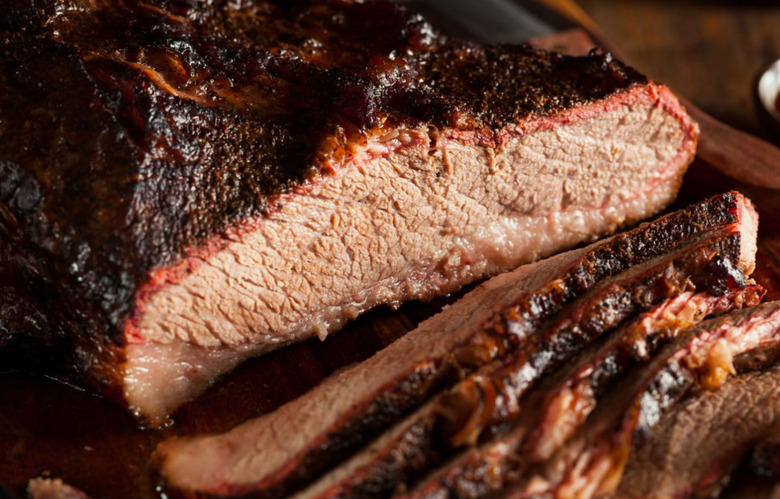Why Does Barbecue Get That Red 'Smoke Ring?'
It's long been known that if you're looking for real barbecue — that is, meat that's spent hours cooking low and slow over real wood smoke — the hallmark is the smoke ring. This thin pink band runs around the outer edge of the meat (preferably under a sturdy coating of bark) and tells you that the smoke has successfully penetrated the meat. But why exactly does the smoke ring appear?
It all comes down to chemistry, of course. According to amazingribs.com, the main players in the interaction are myoglobin, nitric oxide, and carbon monoxide. Myoglobin, in a nutshell, is the protein that gives meat its red color; it's also much of the "juice" inside a nicely cooked piece of meat (this is why the grayer a piece of meat is, the less juicy it is). Smoke contains many chemical compounds, and they all play on meat differently. Nitric oxide and carbon monoxide are two of those compounds, and thanks to the prolonged exposure to the meat's surface, the chemicals penetrate the meat and "fix" the myoglobin's red color. In reality, the smoke isn't turning the meat red; it's preventing it from turning brown!
Also, for what it's worth, curing salt contains a close relative of nitric oxide, sodium nitrite. Sodium nitrite works in the same way: When it comes in contact with meat, it "fixes" the red color in the myoglobin, and voila: bacon is pink instead of gray.
As another aside, this proves that you don't actually need smoke to make a smoke ring, you just need to coat meat in curing salt and let it cook low and slow in a regular oven. But don't worry, we're sure that none of America's best barbecue chains are taking the easy way out.
